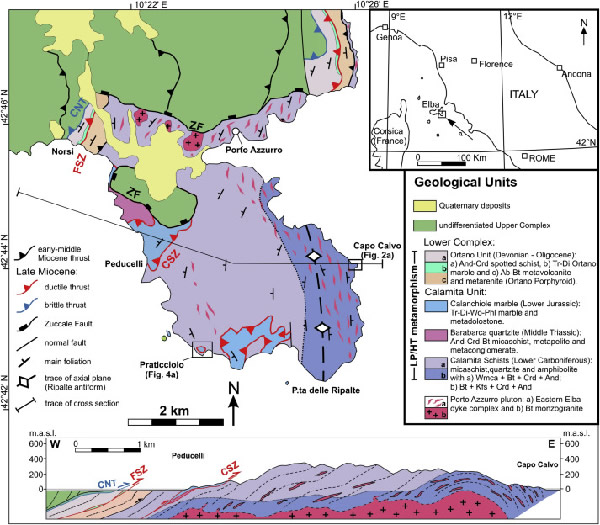Evolution of shear zones through the brittle-ductile transition: The Calamita Schists (Elba Island, Italy)

Papeschi S., G. Musumeci, F. Mazzarini (2018).
Journal of Structural Geology, 113, 100-114, https://doi.org/10.1016/j.jsg.2018.05.023.
Abstract
A network of shear zones that evolved through the brittle-ductile transition is exposed in the Calamita Schists, Elba Island, Italy. The shear zones formed during Late Miocene contractional deformation coeval with high grade contact metamorphism (∼650 °C) related to the emplacement of plutonic rocks at shallow crustal levels (∼7–10 Km). An early stage high metamorphic grade foliation was overprinted by mylonitic deformation that progressively localized on low-metamorphic grade shear bands producing S-C mylonites during cooling of contact aureole.
Localization of deformation on shear bands was driven by temperature decrease that triggered strain partitioning between ‘hard’ high grade relics and ‘soft’ shear bands. Softening of shear bands occurred likely due to fluid influx and retrograde growth of fine-grained phyllosilicates. The interconnection of anastomosing shear bands and passive rotation of the relic high grade foliation caused widening of the shear bands producing mylonites with a composite mylonitic foliation and C′ shear bands. An estimate of the vorticity number Wk of the flow of ∼0.3–0.5 was obtained from the orientation of C′ shear bands measured at the meso- and thin section-scale. Close to the brittle-ductile transition, the growth of soft phyllosilicates allowed C′ shear bands to act as precursory structures to brittle deformation localized into an array of low-angle faults and shear fractures.


Devi effettuare l'accesso per postare un commento.